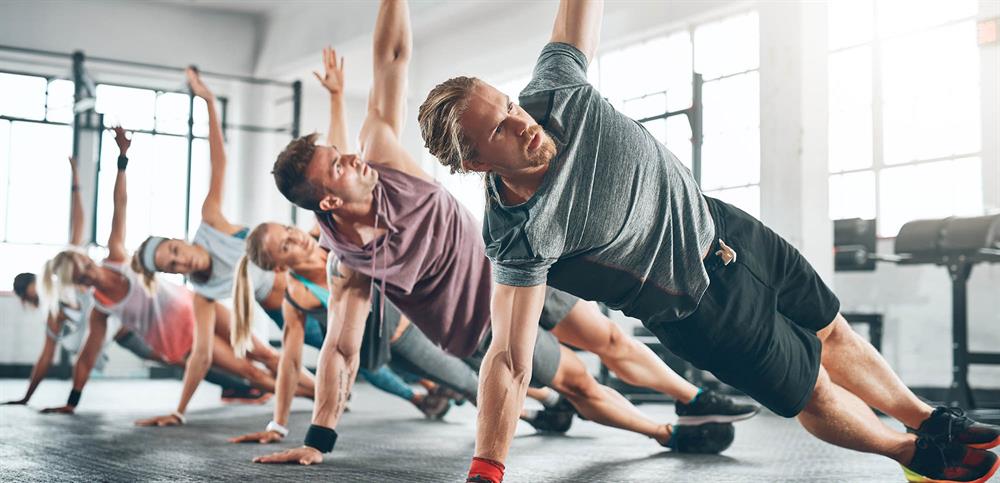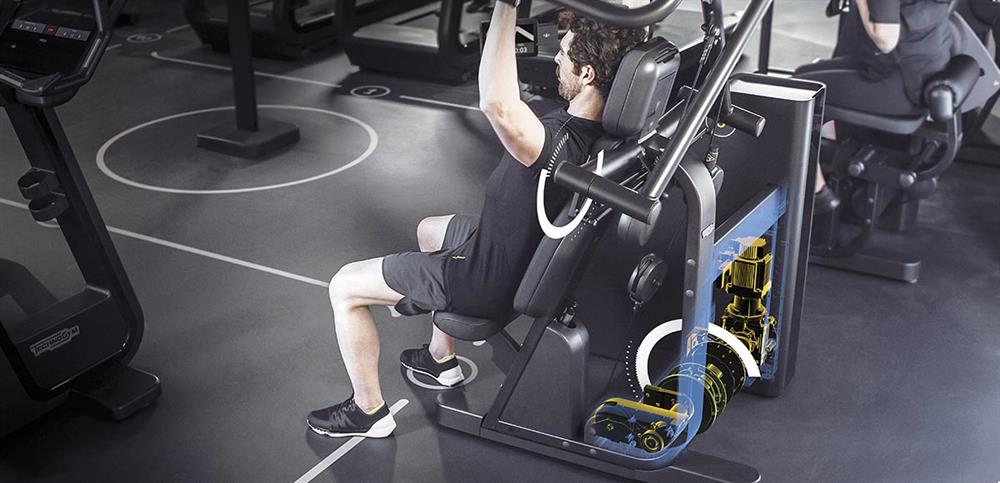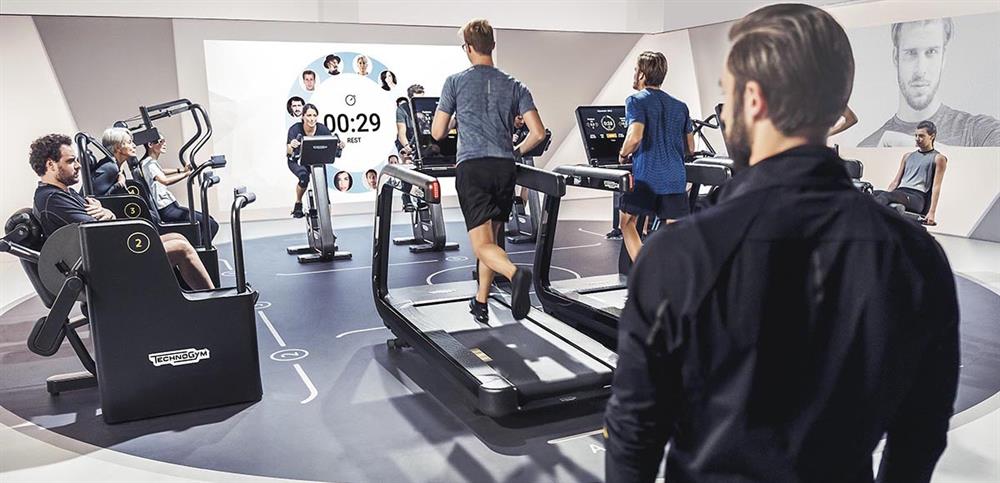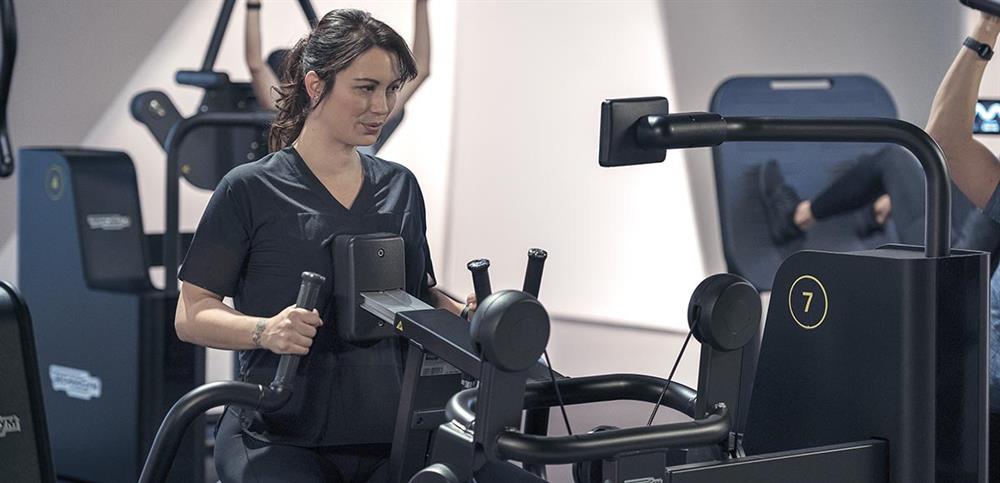Roberto Nicoletta - Technogym |
May
21, 2019

Key Points:
1. A well-rounded exercise program consisting of both aerobic and resistance training is preferred to one that focuses only on a single mode of exercise. One training modality that perfectly fits this kind of approach is circuit training.
2. As advantageous as circuit training can be, proper management can be challenging. All this slows down the whole training and clogs the movement of people in one spot negatively effecting the experience of both the users and the trainers.
3. With that in mind, Technogym has developed a circuit training program called BIOCIRCUIT that consists of six strength and six cardio stations with a fixed work/rest time ratio, allowing up to 12 users to work simultaneously at all times with no unexpected waiting times.
Bringing Circuit Training into the Future for A Better Workout
The benefits of aerobic exercise on various health outcomes and functional parameters are well established (increased insulin sensitivity and aerobic capacity, reduction of body fat and cardiovascular risk, etc.). Similarly, research has shown that the beneficial effects of resistance training on muscle strength and mass (including higher muscle strength, quality, size, power, endurance, etc.) occur across all segments of the population. Thus, it goes without saying that a well-rounded exercise program consisting of both aerobic and resistance training is preferred to one that focuses only on a single mode of exercise.

It goes without saying that a well-rounded exercise program consisting of both aerobic and resistance training is preferred to one that focuses only on a single mode of exercise.
One training modality that perfectly fits this kind of approach is circuit training. It consists of 8 to 12 consecutive stations, but may vary according to the design. During a circuit training class, participants with different training abilities can work at their own intensity while also training with others. In fact, each participant moves from one station to the next with little (15 to 30 seconds) or no rest, performing 15 to 45 seconds of work (generally 8 to 20 repetitions) at each station. Loads can vary from body weight to external resistances of approximately 40% to 80% of 1RM. When cardio stations also are included in the circuit (such as cycling and running) you have a quick, fun and effective all-around workout that stimulates both the aerobic and anaerobic energy systems in addition to the strength component.
Circuit training can be performed both with gym equipment or with bodyweight exercises. It is important to remember that using just the weight of your body or a small set of weights can provide enough resistance to make you sweat when you are short on time, thus creating a time efficient workout you can perform almost anywhere, although with some drawbacks, as we’ll see later on.
Taking Circuit Training to the Next Level
As advantageous as circuit training can be, its correct management (especially when different weights, tools and machines are used) can be quite tricky. For example, some people might have a hard time adjusting their loads or seating, setting the machines, remembering where to go etc. All of this slows down the training circuit and stalls the movement of others in one spot, negatively affecting the experience of both the users and the trainers.
Despite the undeniable time efficiency of bodyweight exercises, the lack of specific, customized loads, and the reduced cardio activity, makes this type of circuit training not as effective in the long run.
With that in mind, Technogym developed a circuit that reduces the complexity of circuit training, while keeping it effective, technologically advanced and fully customizable, thus bringing it to the next level.
BIOCIRCUIT consists of six strength and six cardio stations with a fixed work/rest time ratio, allowing up to 12 users to work simultaneously at all times with no unexpected waiting times. Thanks to the integrated digital solution, the machines themselves guide the user during the workout in order to easily achieve the selected goal and even instructs the user on where to go next. This technology allows the user to complete a full circuit training session in precisely 30 minutes (even though variations can be made to lengthen or shorten the workout).
But the real added value is represented by the fact that the BIOCIRCUIT allows the unique possibility of subjectively customizing the exercise intensity thanks to the execution of the “circuit set up”, a quick test battery aimed to identify the correct intensities for each user on both cardio and strength machines. Accordingly, the proposed loads in any of the stations are always related to individual percentages of maximal strength and aerobic capacities depending on specific goals and needs.

This means that 12 people could be working at the same time on the circuit, each one of whom with different goals, loads and work intensities.
All of the above mentioned was achievable thanks to the development of an electronic motor installed on the machines. This innovative motor is able to generate adaptive resistance adjustments in response to kinematic parameters (
i.e., position, velocity and acceleration) of movement. However, any desired resistance type and profile can, in theory, be designed to emphasize muscle activity in a particular portion of the range of motion or unload a specific joint structure. In fact,
isotonic (also with different loads between the concentric and eccentric phase), hydraulic, viscous, elastic and isokinetic resistances were all reliably simulated to provide a solid and innovative training experience for users requiring different needs. Having all these types of resistances on board allows the trainer to choose among
a series of different training modalities, making it possible to always assign the right workout to the right user.
This innovative technology allows the user to enter the circuit, automatically find the exact needed loads, complete his/her workout in the planned time and, keep track of his/her results.

More efficient for the user, easier to manage for the trainer: win-win!
References
1) Garber CE, Blissmer B, Deschenes MR, et al. Quantity and quality of exercises for developing and maintaining cardiorespiratory, musculoskeletal, and neuromotor fitness in apparently healthy adults: Guidance for prescribing exercise. Med Sci Sports Exerc. 2011;43(7):1334-59.
2) Mayorga-Vega D, Viciana J, Cocca A. Effects of circuit training program on muscular and cardiovascular endurance and their maintenance in schoolchildren. J Hum Kinet. 2013; 5(37):153-60.
3) Paoli A, Pacelli QF, Moro T, et al. Effects of high-intenisty circuit training, low-intensity circuit training and endurance training on blood pressure and lipoproteins in middle-aged overweight men. Lipids Health Dis. 2013;12:131.
4) Sperlich B, Wallmann-Sperlich B, Zinner C, Stauffenberg VV, Losert H, Holmberg H-C. Functional high-intensity circuit training improves body composition, peak oxygen uptake, strength, and alters certain dimensions of quality of life in overweight women. Front Physiol. 2017; 8:172.
5) Klika B, Jordan C. High-intensity circuit training using body weight maximum results with minimal investment. ACSMs Health Fit J. 2013; 17(3):8-13.
Author: 
Roberto Nicoletta works in the Medical-Scientific Research & Innovation Department of Technogym and serves as the head of Sport Science for the Italian Rugby League National Team. He also has collaborated with the NBA as a strength and conditioning coach during the NBA Global Camp 2018. Nicoletta holds an international Master’s of Science in Sport Science, Health and Physical Activity, which he obtained by studying across four different European universities (the University of Foro Italico of Rome, the University of Southern Denmark in Odense, the German Sport University of Cologne and the University of Vienna).